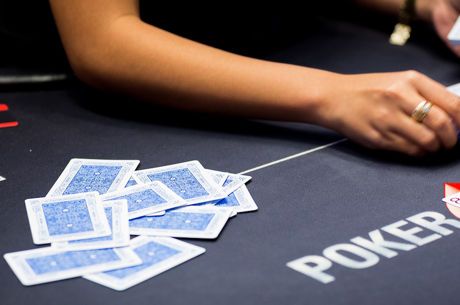Game Selection: Where Should You Play Poker?

Where is the best place to play?
This is a common question posed by players seeking out a good $1/$2 or $2/$5 no-limit hold'em game.
In areas with multiple poker rooms, the initial focus often is on non-poker considerations. Is this or that room comfortable or too cold? Are the comps generous? How competent are the dealers and floor staff? Are beverage servers plentiful and efficient? Is decent food available to order and eat at the table? Can you walk around or lean back in your chair without bumping into other people? How about the decor and lighting?
Too much attention to these creature comforts, however, may result in overlooking factors that more directly dictate the flow of the games �� and, importantly, whether the games are best suited for you. Here are a few items you should be considering when choosing where to play your next live game.
More Chips Means More Action
Start by asking how much money will be on the table.
The best players want to be surrounded by large and deep chip stacks. They believe they have a skill edge over the rest of us and will find ways to take large chunks of everybody else's chips to add to their own stacks.
As obvious as that statement sounds, it is still greatly underappreciated.
Suppose you want to play in a $2/$5 game. Some rooms cap each player's buy-in (and top up) at $500, while other rooms might use a cap of $1,000 or $1,500. With $500 stacks, it's fairly easy to get all in by the river. An aggressive player can raise preflop, then bet, bet, shove without any raises or oversized bets.
But with $1,500 stacks, getting all of the chips in the middle isn't so easy. In these games, expect less limping, more straddles, larger opening raises, more three-bets, more raises or check-raises on the flop or turn, and more overbets. For simplicity, let's refer to this entire set of actions as "Highly Aggressive Tactics."
Expert poker players are more adept at using Highly Aggressive Tactics to their advantage. The actions are designed to make players with lesser skills uncomfortable and induce mistakes, which can include responses that are overly passive or overly aggressive. To take full advantage of the Highly Aggressive Tactics, the expert players must seek out the deeper-stacked games.
How Much Risk and Variance Do You Want?
The most recreational and friendly feeling games will be found in poker rooms with smaller buy-in caps and more restrictive straddle policies. Few professional players join these games, as their full range of Highly Aggressive Tactics cannot be used to maximum effect.
In these games, if you run bad or make a mistake, you won't need a huge bankroll to be able top up your stack or start over. The style of play in these rooms may provide less action than you crave, but the lesser-skilled, more passive players you find there are exactly what makes these games profitable.
If you've chosen such a game yet find yourself surrounded by multiple extra-deep stacks anyway, don't hesitate to ask for a table change.
Maybe you want to test yourself against the best players you can find. Then you should look for higher buy-in caps or rooms that allow you to match the largest stack on the table. Also look for rooms that allow straddles from the button and/or in larger, discretionary amounts. Some rooms also allow bomb pots if all players agree, where each player puts up an large ante in lieu of the pre-flop betting, ensuring all players will see the flop.
In such cases, be prepared when the Highly Aggressive Tactics are a part of nearly every hand. The action can be thrilling, but like a roller coaster ride may leave you with an upset stomach.
Do Your Homework
Using Poker Atlas or other resources, it's fairly easy to identify the buy-in caps and other policies of each poker room in the area you are planning to visit. Start your planning by narrowing the list of poker rooms to those most likely to provide the style of game and opponents you are looking for and your bankroll can handle.
Then you can focus on environmental factors, customer service, and other creature comforts to make a final decision as to where to play.
David Bass mostly plays in live no-limit hold'em cash games and has been writing about poker since 2012. You can follow him on Twitter @KKingDavidPoker or enjoy his blog, They Always Have It.









